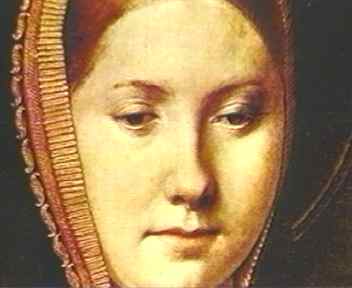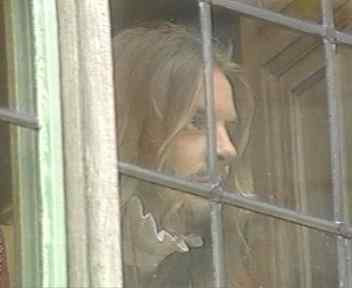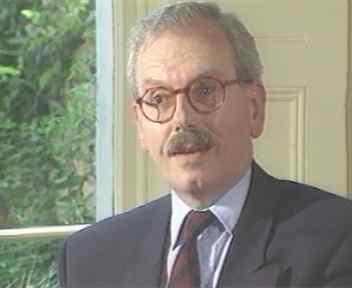Films for the Humanities, 1997.
| The Journal for MultiMediaHistory Volume 1 Number 1 ~ Fall 1998 |
The Gunpowder Plot of 1605. Princeton, NJ: Films for the
Humanities and Sciences, 1997. 52-minute VHS video.
Editor, Ralph Tittley. Narrator, Peter Twist. Presents a dramatized recreation of the plot by Catholic dissidents to blow up the British Parliament in 1605.
Films for the Humanities, 1997. |
The Gunpowder Plot of 1605, featuring the historian David Starkey, provides an interesting and well-detailed explanation of the events still celebrated with Guy Fawkes� Day. Through a mix of reenactments, historical commentary, and thorough analysis of early seventeenth-century social and political attitudes, the video explains both why there was a Catholic conspiracy to blow up the Parliament buildings and destroy the British government in 1605, and why it did not work. The video argues that the plot had no chance of succeeding, and that its conspirators were dupes in the Earl of Salisbury�s plan to increase King James I�s power in England by exaggerating the extent of fanatical Catholic conspiracies against him. James I�s frightened subjects would rally even closer to him, threatened by the Catholic bogeyman. The religious intolerance central to definitions of English identity and Protestantism produced the plot by creating and enforcing penal laws against Catholics. These attitudes also created a political need for a dangerous conspiracy, by defining the national identity both positively, as English and Protestant, and negatively, as vehemently non-Catholic. By fearing Catholicism, English Protestants reaffirmed their self-definition.
 |
English Catholics put up with Elizabeth because she had no children, and the closest heir to the throne was her Catholic cousin Mary, Queen of Scots. Even after Mary�s execution in 1587, English Catholics centered their hopes on her son, James VI of Scotland. James was a Protestant, but the English Catholics firmly believed that he would alleviate the penalties against them for his mother�s sake. James used these hopes to broaden his support in England, but dashed them shortly after he took the throne, when he strengthened the penal laws against Catholics. Feeling betrayed, the English Catholics launched several ill-conceived plots against him, disregarding the overwhelming Protestantism of England and the sheer improbability of success. Catholic plots were always directed against the king, on the somewhat weak grounds that if the head of the government were destroyed, the rest of the government could be rebuilt in any way desired. The Gunpowder Plot was the most well-conceived of these plots, because it would have destroyed the whole central government as well as the monarch, leaving the country in a shambles, and perhaps forces sympathetic to Catholicism would have taken control.
The plot was hatched by Sir Robert Catesby, a Catholic gentleman who had been involved in the Earl of Essex�s rebellion in 1601�another Catholic plot�but had escaped with his life by selling his estate in order to meet the fines levied against him. In 1604, he originated the Gunpowder Plot, designed to kill the king and Parliamentary leaders by blowing up the center of government, the Parliamentary buildings. He quickly enlisted the help of four men: John Wright, one of his fellows from Essex�s rebellion; Thomas Winter and Guy Fawkes, Catholic soldiers; and Thomas Percy, steward to the Earl of Northumberland. They formulated their plans, gained more followers and swore an oath to follow through with them, unaware that they were playing right into the government�s hands.
Sir Robert Cecil, the Earl of Salisbury, played a central role in the plot, unbeknownst to the conspirators. Salisbury welcomed plots against the king because, when discovered, they strengthened the king�s position as leader and protector of his people. He learned about the plot from Lord Monteagle, Thomas Winter�s employer and a Catholic who had obtained the rights to his title by agreeing to spy for the government amongst his fellow Catholics. Monteagle learned of the plot and informed Salisbury, who was able to piece together the general outline of the plan and watched eagerly, trying to let the plan develop to its fullest extent before revealing it. The plotters rented a building next to the Houses of Parliament and planned to tunnel through the basement and plant gunpowder under the Parliament. Unfortunately, the building was too close to the Thames and their tunnel kept flooding. Salisbury, hoping the threat would develop further, arranged for a vacancy in a vault under Parliament; taking it as evidence of God�s endorsement of their plan, the plotters quickly rented it. Thirty-two barrels of gunpowder were hidden amongst firewood and other supplies, and Guy Fawkes was chosen to light the fuse when the king appeared at Parliament.
 |
From The Gunpowder Plot, 1997. |
Ironically, the Gunpowder Plot had little effect on seventeenth-century England. Most English Catholics wanted to be left alone, not to change society. They were content to pay the fines assessed by the penal codes, stay out of politics altogether, and try to carry on with their daily lives as best they could. They were not surprised when the Gunpowder Plot failed, and many of them were probably glad that it had not disrupted their lives and turned their countrymen even more vigorously against them. James I�s attitude toward Catholics was unchanged by the Plot; he knew several members of the government were secretly Catholic and took no action against them. Since he saw himself as a moderate, he actually became more tolerant toward Catholics later in his reign, trying to avoid religious persecution while maintaining a Protestant country. The plotters not killed at Holbeche House were publicly executed in January 1606; their execution provided a public celebration. Guy Fawkes� Day is still celebrated on 5 November, although it has lost most of its anti-Catholic symbolism; now there are simple bonfires rather than popes being burned in effigy. The celebration represented the pro-king, pro-Anglican, anti-Catholic mob prevalent in the early modern period. It was an embrace of tradition, rather than a significant departure from it.
 |
From The Gunpowder Plot. |
On the whole, though, the video is very informative about both the Gunpowder Plot and seventeenth-century English society, and at fifty-two minutes long, fits nicely into most class periods, making it an exceptional teaching tool.
Kristen D. Robinson
University of Kentucky
![]() Comments
to: [email protected]
Comments
to: [email protected]
Contents: JMMH, Volume 1 Number 1 ~ Fall 1998